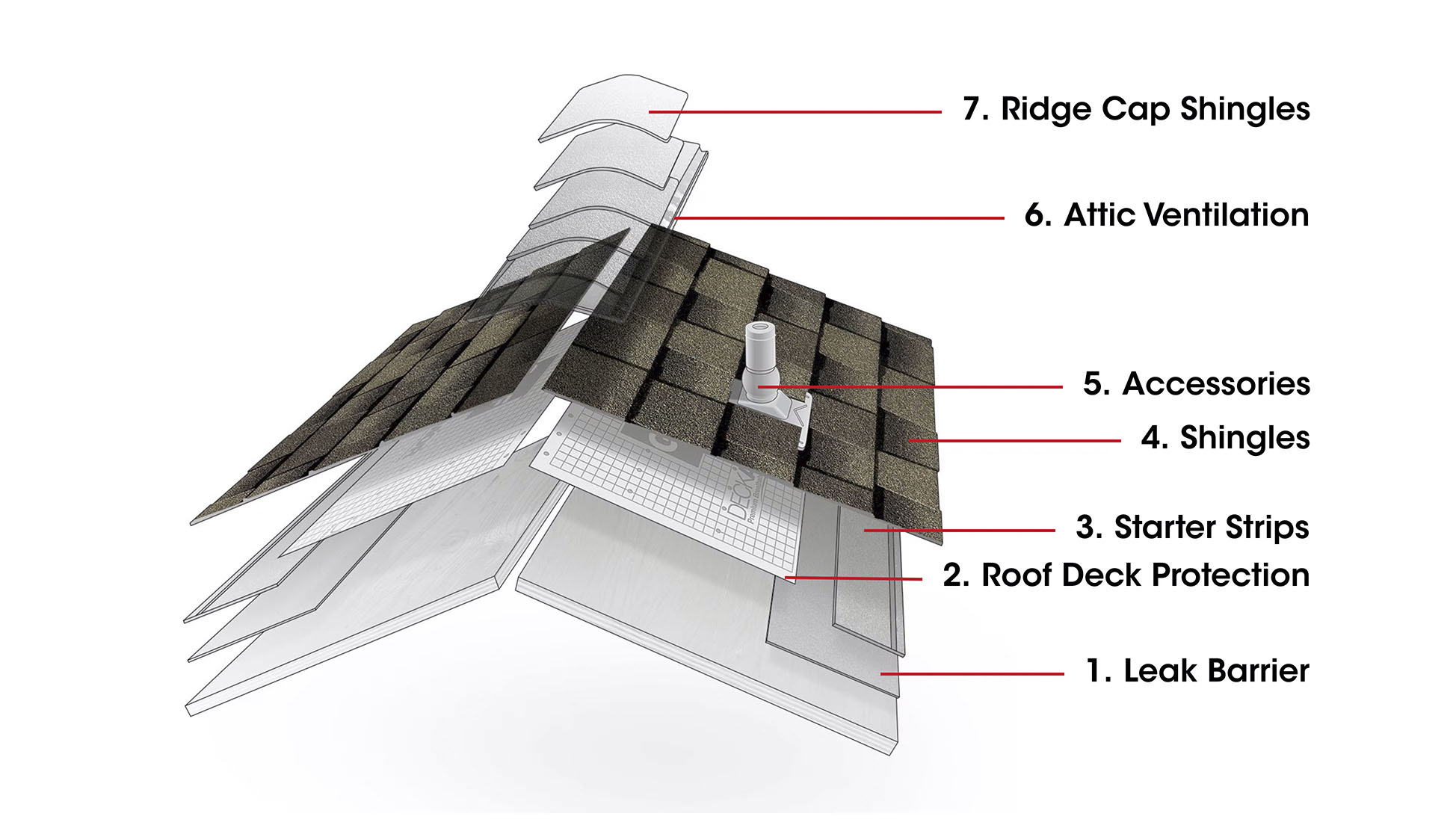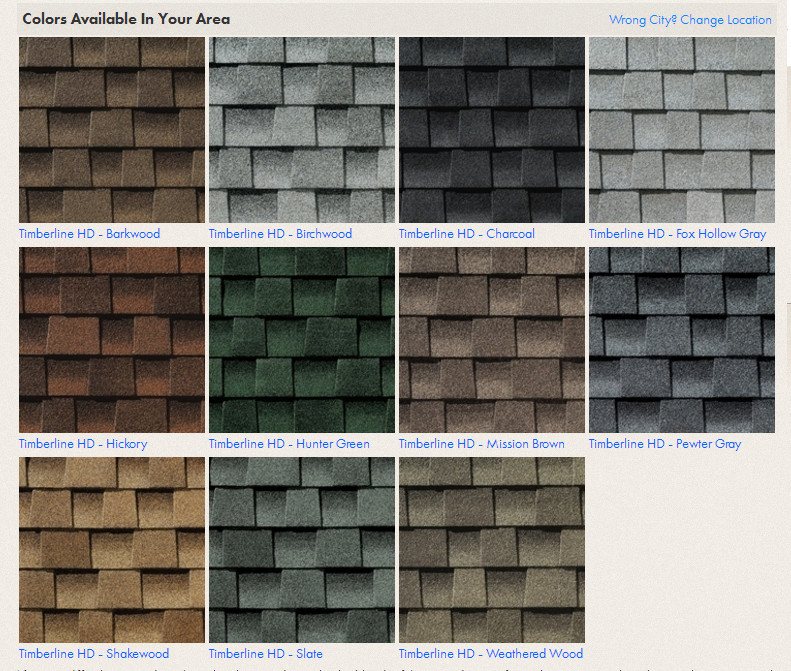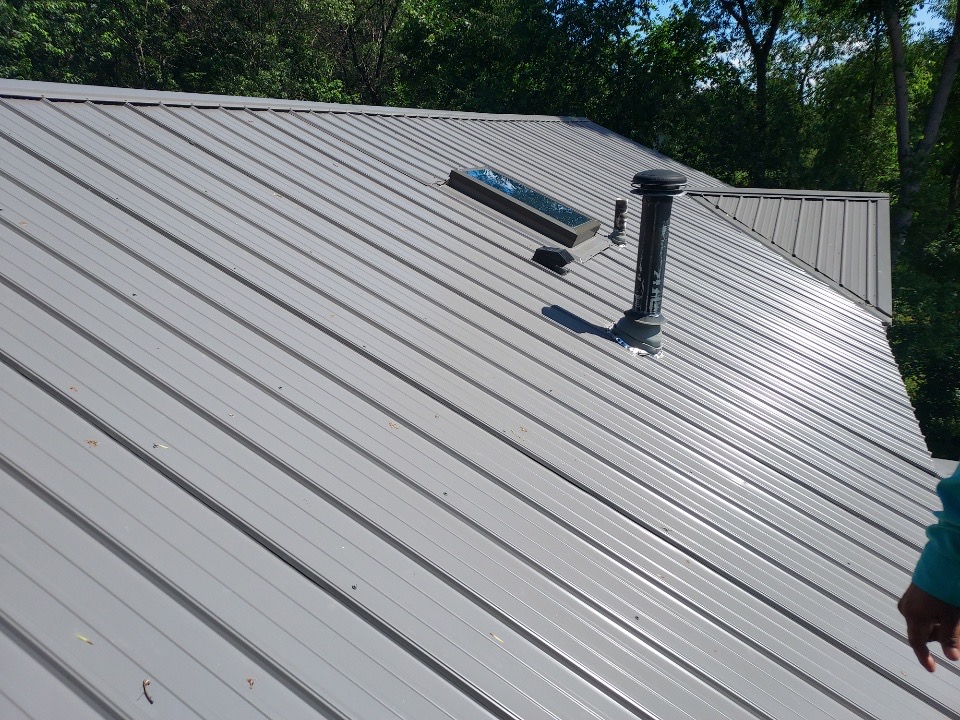
Roofing Components

Above you will see a handy diagram that shows the basics of what will go in to an asphalt roof (courtesy of GAF). You see Starter, Ice & Water Shield (leak barrier), Felt (roof deck protection), Shingles, Ridge and the accessories such as the plumbing boots or furnace vents, and some times you have ridge vent in place of other types of vents.
Under it all you have the roof deck which is much of the time made out of composite boards or plywood. Older homes were decked with boards with gaps between them. Depending on the size of the gaps, those houses may have to be re-decked. Shingle manufacturers require a solid roof deck for their warranty.
In our area (Minnesota), Ice & Water Shield are required by code. Many older homes never had Ice & Water Shield, and insurance will not cover what was not originally there, unless the contractor supplements for it. This is a must have in order to pass the required inspections, and pictures of it are sent to the city that has permitted the job.
Roofing - Types of Roofing
Asphalt or Composite Shingles
There are many different types of roofing. The most cost effective (cheapest) is asphalt roofing. There are flat, or 3 Tab, shingles and there are also Architectural or Dimensional shingles. Most people choose the Architectural shingles, simply because they last longer and have a more distinctive look. They are both multi-layered materials meant to ensure protection against the elements. The standard shingle has 5 layers.
- The outermost layer is made of quarried & crushed stone granules.
- Under the top layer is a layer of asphalt. This layer helps the shingles resist the force of hail and debris landing on your roof.
- The center layer is a mat core that provides flexibility and more durability. Most are made up of fiberglass which is coated with the asphalt and adheres to the fibers, making it a more stable surface for the granules on top.
- Beneath the central core is another layer of asphalt, essentially sandwiching the fiberglass inside of it to keep the shingle together.
- The bottom layer is a sealant that rests against the roof deck to keep it firmly in place.
These shingles come in many colors, and you can work with your contractor to select the right color for your home. some colors are only available in certain areas of the county, so check with your contractor to see if a color has either been discontinued or unavailable.
The warranties on these shingles vary by the brand, but most offer a lifetime warranty. However, If you get a major storm that comes through your area, and the hail is big enough it will go through almost anything. Personally I have see hail go straight through the shingle and through the decking underneath, and no warranty is going to help with that. That is an insurance claim. The warranty is good if you do not get any storms like that, or tornadoes, high winds, etc.

Steel Shingles or Panels
Whether you want to replace your asphalt shingles with steel shingles or asphalt it is up to you. Steel is a definite upgrade on both durability and also the cost. The modern steel shingles are made to look like shakes or asphalt dimensional shingles and have a variety of colors. These are heavier than asphalt, but are low maintenance and have a great long-term value.
Styles of Metal Panels
- Corrugated sheets: These are accentuated by its exposed fasteners, which need to be maintained to prevent loosening and corrosion.
- Flat sheets: Lowest average cost of all metal roofing materials. They are usually galvanized steel and have exposed fasteners.
- Shingles: Metal shingles are often shaped and textured to resemble asphalt, wood, or slate shingles.
- Standing-seam panels: This style is more durable because the locked-together seams enclose the fasteners, meaning panels can stand up to high winds and other extreme weather.


Cedar Shake Shingles
Cedar shake roof shingles are a very resilient and durable option. When storms rage outside, these shingles stand strong, protecting your home from wind, rain, and even hail. Cedar is an incredible insulator. When the sun beats down, these shingles help keep your home cool, reducing the need for excessive air conditioning. Conversely, during chilly days, they trap warmth inside, making your home cozy and snug. They will weather over time to a silvery gray color.
Cedar shake roof shingles need regular maintenance to stay in top shape. They require periodic inspections to ensure they haven’t been damaged, especially by insects or rot. Additionally, treatments and cleaning are necessary to prevent moss or mold growth. This maintenance can be time consuming and may require professional help. Failure to maintain these shingles properly could shorten their lifespan and lead to costly repairs down the line.

Flat Roofing
EPDM (short for ethylene propylene diene monomer) is a true rubber. The durable single-ply membrane material resembles an inner tube, but it’s engineered to resist damage from sunlight. EPDM can be mechanically anchored with fasteners, ballasted with stone, or glued. The seams need to be welded. This is used for low slope applications and/or commercial roofs.
TPO roofing is also for low slope applications, and is typically white to reflect the heat. TPO is the short name for thermoplastic polyolefin. This innovative material is made up of polypropylene, a chemical compound known for its elasticity and durability and commonly used in the manufacturing of a slew of both industrial and household products. Polypropylene is also known for its slippery characteristic, which means it can work well to repel moisture from potential roof wreckers like rain or snow.
The process of installing TPO involves prepping the existing roof by cleaning it, and if needed, removing any existing covering, then laying down the TPO material. Once the TPO membrane has been rolled out over the roof, it is secured to the roof’s cover board with a mechanical tool or adhesive. To complete the TPO installation process and effectively insulate the roof, a hot air gun, or hot air welder, is used to seal the seams of the TPO material together.
